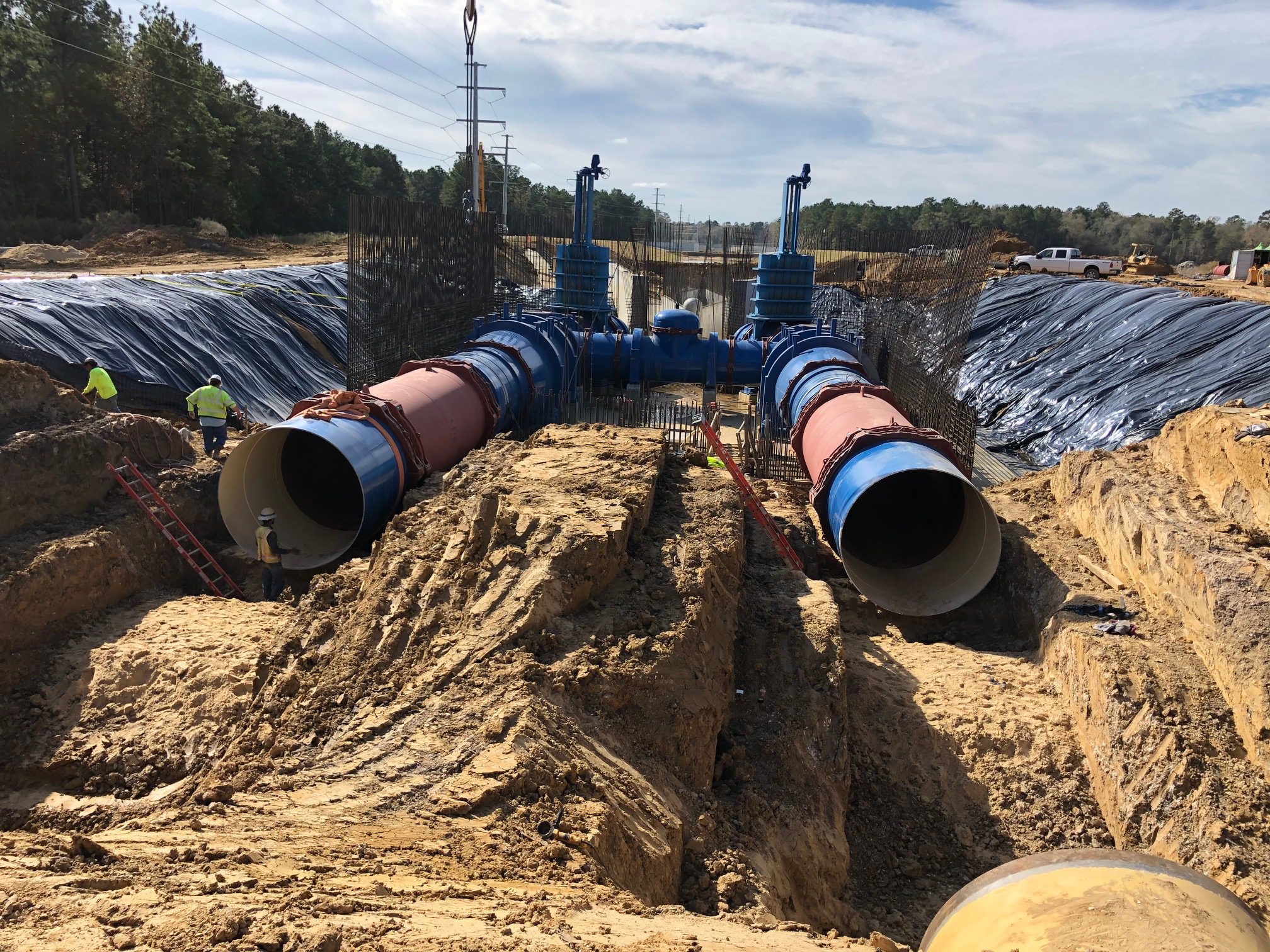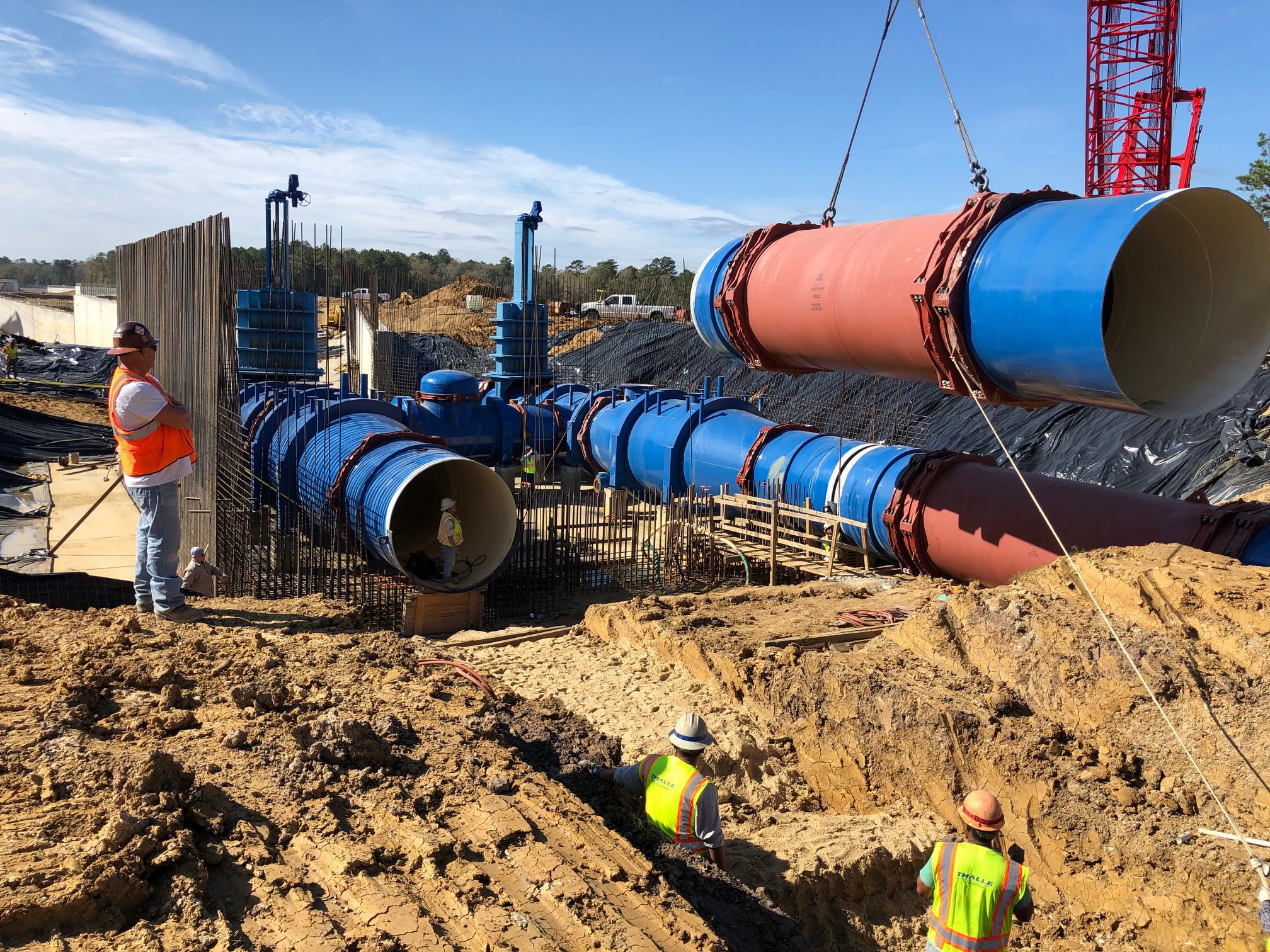Pigs in the Water? Houston’s Largest Surface-Water Project Brings Engineering Value and Confidence

By Josh Tebbe and Wayne Biery
The Greater Houston region’s reliance on groundwater created the nation’s largest areas of ground subsidence and placed the metro area on a path toward a potential water shortage as its population grows.
Recognizing these issues, district officials established the Surface Water Supply Project and required Harris and Fort Bend counties to convert from using groundwater to surface-water sources such as lakes and rivers. The goal of the initiative is to have a 60-percent reduction of groundwater usage by 2025 and an 80-percent reduction of groundwater usage by 2035.
Sourcing surface water from Lake Houston will add a new supply point for the region. However, studies have shown that Lake Houston and the Northeast Water Purification Plant (NEWPP), which treats water from the lake, won’t be able to meet the total future water demands for the Houston area.
For this reason, the Coastal Water Authority—in partnership with the City of Houston, BGE Inc. and Thalle Construction—initiated the Luce Bayou Interbasin Transfer Project (LBITP), the largest surface-water project in the region, to help Houston secure its future water-supply needs.
The $318 million project will convey untreated water and water supplies from the Trinity River to an outfall structure near Lake Houston, including a 500 million gallon per day (MGD) pump station, approximately 3.6 miles of pipelines and 23 miles of open canals. After the water is transferred to and treated at Lake Houston, more than 300 water districts and city customers in the northern and western Houston metro area and northern Fort Bend County will reap the benefits of the treated water.
Setting up for Success
While the LBITP will connect the raw water delivery (with treatment capacity) to the region’s new water supply, it also will provide a reliable and treated water source to Houston-area residents and is predicated on keeping the system up and running. A critical component of the LBITP is the pig-retrieval station, which will be utilized for regular maintenance on the pipelines to launch a cleaning pig to remove zebra mussels that collect inside the pipe from the water supply.
The Luce Bayou pig-retrieval station project required the installation of three miles of dual 96-inch-diameter water-transmission lines and construction of the retrieval station. These large-diameter components needed to withstand not only day-to-day operational stressors on the system, but also accommodate forces from the potential settlement of the varying soil conditions.
BGE Inc., the design engineer, also was tasked with reducing the footprint of the station to help minimize project costs and shorten the schedule while delivering a system optimized to streamline maintenance work.
Engineering Confidence Into the Build
To provide value engineering objectives associated with reducing the station size, BGE collaborated with Victaulic to provide a total system solution for the large-diameter project.
The first step was to design a system that accounted for thermal expansion and contraction inside the station as well as differential settlement. BGE selected the Victaulic Style W257 Dynamic Movement Joint (W257) to join the system piping and components because of its capabilities to accommodate the needed dynamic movement.
Using Victaulic’s W77 AGS self-restrained flexible couplings, along with the W257 joints, provided the technology for the value engineering that allowed BGE to reduce the valve vault size and the station’s overall footprint to meet the cost-reduction objectives. In this instance, the W257 joints could achieve the required four inches of settlement in less than 30 feet of space, while alternative methods would have required more than twice the space and excavation to install restraining devices (such as an M11 harness), and the AGS flexible couplings reduce stresses back onto the building, enabling for a thinner-walled structure.

Pictured is the pig retrieval station using Victaulic’s W77 AGS self-restrained flexible couplings and the W257 Dynamic Movement Joints. Together they create a fully restrained system solution that met the design criteria of withstanding the forces of the day-to-day operations and reducing the size of the vault.
On this critical system, the Victaulic couplings provided a quick and easy method of entry required to access the isolated systems as well as the cleanout and retrieval areas in the event of routine system maintenance or untimely shutdown. When the system is up and running, these products can be maintained easily with minimal disruption to operations and without introducing unnecessary risks for maintenance workers. This also allows for the easy tie-in for the future system expansion objectives of the LBITP.
Maximizing Project Value and Safety
For the general contractor, Thalle Construction, maximizing construction efficiencies without compromising the safety of crews were top priorities. Grooved mechanical pipe-joining technology provided a simplified construction methodology that inherently minimizes risks to installers through the use of products designed for quick and easy installation. Workers completed the installation without specialized tools, achieving rapid assembly in part because the joints are self-aligning. Installers visually verified proper joint assembly by confirming metal-to-metal bolt-pad contact. Using these components also simplifies maintenance, because they’re designed with a union at every joint, making them easy to remove and replace in restricted space. On many infrastructure systems, as with LBITP, the requirement of a coated and lined pipe is typical. Secondary operations to coat and line post-joint installation are eliminated with the use of Victaulic methodology. This benefit helps meet and exceed the efficiency and value goals that BGE and Thalle required.
A Successful Outcome
All of these factors allowed Thalle Construction to deliver the critical pig-retrieval station with the ability to accommodate the forces and differential settlement, achieve the necessary footprint reduction, minimize safety risks and provide reduced downtime for routine or untimely maintenance. Through the combined partnership efforts of all parties involved in the LBITP, the goals were achieved and the ability for future expansion is now innate with the use of the self-restrained flexible solutions.
With its critical infrastructure in place to source, treat and deliver new water supplies to the region, the Greater Houston area is on a more-sustainable path to delivering water supplies to residents as the city continues to grow. According to the 2011 State Water Plan, more than 9 million people will utilize the benefits from the LBITP by 2060.
Josh Tebbe is water system technologies and wastewater specialist, Victaulic, email: [email protected]. Wayne Biery is project sales manager/director, Victaulic; email: [email protected].
About Josh Tebbe
Josh Tebbe is water system technologies and wastewater specialist, Victaulic, email: [email protected]. Wayne Biery is project sales manager/director, Victaulic; email: [email protected].


